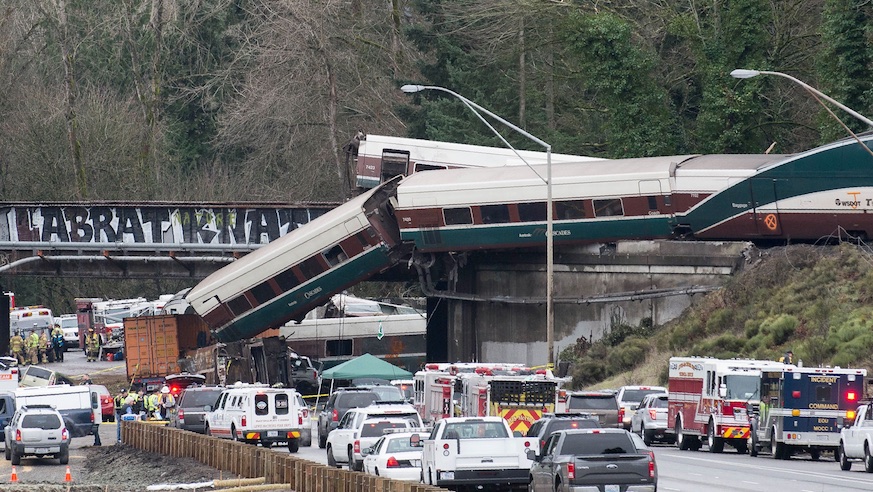In a literal sense, railway safety seems to be off track across the country, as three fatal train accidents have captured the media spotlight in as many months.
First, in December, there was an Amtrak train that derailed in Washington State as it took a corner at more than twice the speed limit, killing three people and injuring nearly 100 others. Then, in late January, an Amtrak passenger train carrying Republican members of the U.S. Congress slammed into a garbage truck in Virginia, killing one person on the truck. And earlier this month, an Amtrak train crashed into a parked freight train in South Carolina, killing two crewmembers and injuring at least 116 others.
And these are just the latest headline-grabbing railway disasters over the past few years, including a 2015 Amtrak derailment in Philadelphia that killed eight passengers and sent 185 others to hospitals.
“I remember being flung to the other side of the carriage,” said Eimear Kelleher, who was a passenger on the Amtrak train that derailed in Philadelphia. “The train had flipped to the point where the seats were now the roof.”
“The scene was actual chaos. It was like an episode of Grey’s Anatomy: blood, stretchers, and a man with what looked like a cactus coming out of his head,” Kelleher said.
These harrowing experiences, experts say, could be avoided by implementing safety technology, such as positive train control. This advanced system is designed to automatically stop a train before certain accidents occur, including train-to-train collisions, derailments caused by excessive train speed, and train movements through misaligned track switches.
“That’s technology that would’ve prevented the Philadelphia derailment, the accident in Washington State, and the accident in South Carolina,” says Keith Millhouse, who was instrumental in implementing positive train control in Metrolink, Southern California’s regional passenger rail system.
The problem, according to the majority of train operators, is an economic one.
“Human life is cheap compared to how much it would cost to implement this technology,” says Michael Barasch, a lawyer who’s represented passengers injured in both the Philadelphia and South Carolina accidents.
“Some operators take the position of, ‘Well gee, this is too expensive, we can’t do it,’ Because of that foot-dragging, people have lost their lives that shouldn’t have,” said Millhouse.
Other experts argue that the perceived safety problem is a result of the media.
“I’m not sure we’re seeing so many accidents and derailments, we’re seeing a couple that are getting a lot of press,” said Allan Zarembski, the director of the Railroad Engineering and Safety Program at the University of Delaware.
Referring to statistics released by the Federal Railroad Administration (FRA) that show a downtick in accidents and fatalities, Zarembski said, “Nothing I’ve seen in the statistics from 2017 show that it was a major aberration in safety.”
And, despite the high-profile accidents, there has been no dip in train travel, with only a 4 percent dip in travelers over the last decade, according to the FRA.
As Barasch explained, “It’s human nature to think, ‘It’ll never happen to me.’ So people think about it for a few days, and then it’s like, ‘Honey, when’s our train?’”
Train accidents by the numbers
Despite a perceived uptick in train accidents in the past few months, railway accidents are actually down, according to statistics from the Federal Railroad Administration.
Train Accidents:
2015: 1,936
2016: 1,653
2017: 1,492
Injuries from Accidents:
2015: 563
2016: 386
2017: 204
40%=the decrease in train accidents over the last decade
92%=decrease in casualties resulting from accidents over the last decade
36%=decrease in injuries resulting from accidents over the last decade



















